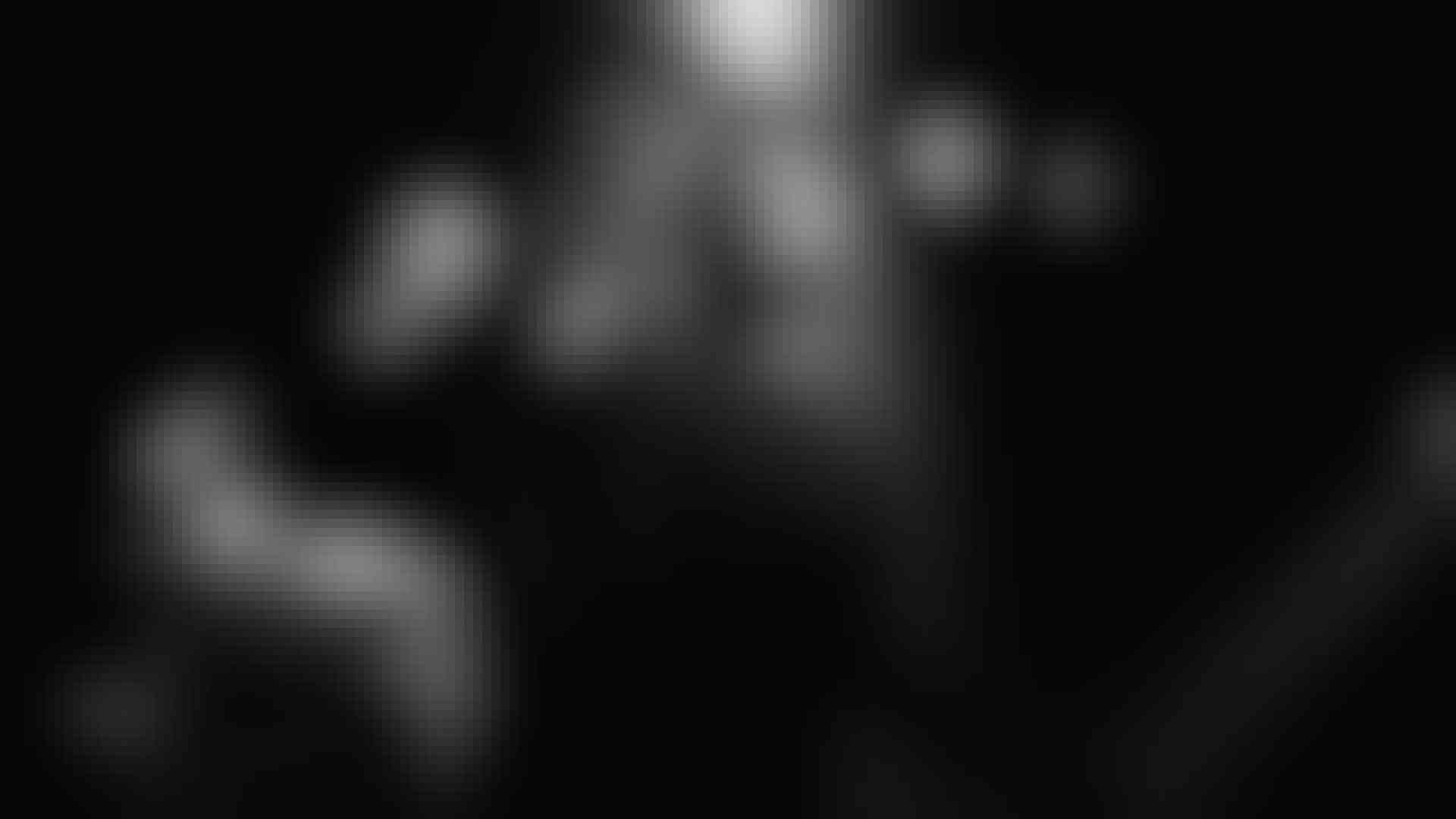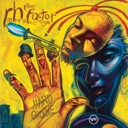Jazz Hip-Hop Fusion
Rapper Black Thought of The Roots, 1999
Photograph by Mika VäisänenKey Attributes of Jazz Hip-Hop Fusion
Select to filter timelineThemes
- Love/Relationships
- Daily Life
- Economics/Poverty
- Social Consciousness
Musical Features
- Improvisation
- Electronic Sounds
- Polyrhythms
- Sampling
- Texture
- Vocals
- Instrumentals
- Beat
Instruments
- Drums
- Horn
- Other Percussion
- Saxophone
- Voice
“I was born in ’87, I love hip-hop. I’m a jazz baby as well; I was exposed to this music at a very young age. To me, it’s the same music—it’s coming from the same tree—and they’re extensions of one another.”Marquis Hill
Jazz hip-hop fusion is a fusion of hip-hop beats, samples, scratching, and rap lyrics blended with the techniques of jazz improvisation. It became popular in the 1990s and continues to evolve in the 21st century with the innovations of a new generation of jazz and hip-hop musicians.
Context and History
Origins and Early Collaborations
In London’s club scene in the 1960s and 1970s, DJs began mixing rare jazz tracks, largely from the Blue Note catalogue, with psychedelic styles, funk, and other popular genres along with percussion tracks to produce a groove (a syncopated and repetitive foundation established by the bass and drum) labeled “acid jazz.” In the 1980s, club DJs began adding elements of hip-hop to the mix and emphasizing the rhythmic component by incorporating live musicians—drummers, percussionists, and horn players—who played over pre-recorded music to create a new type of danceable jazz. Simultaneously, in the US, hip-hop DJs teamed up with jazz artists to produce a jazz–funk–hip-hop fusion style. Working with DJ Grand Mixer D.ST, jazz pianist Herbie Hancock, for example, experimented with the art of scratching on the hit “Rockit” (1983).
The fusion of jazz and hip-hop evolved into a distinctive style when rappers began sampling jazz melodies and rhythms from recordings of Dizzy Gillespie, Lonnie Liston Smith, Donald Byrd, Sonny Rollins, Art Blakey, and Roy Ayers, among others, and later collaborating with jazz musicians. Stetsasonic’s “Talkin’ All That Jazz” from In Full Gear (1988) samples jazz breaks from Lonnie Liston Smith’s “Expansions” and Donald Byrd’s “(Fallin’ Like) Dominoes.”
Gang Starr was the first rap group to work directly with jazz musicians, recording “Jazz Thing” with Branford Marsalis for Spike Lee’s movie Mo’ Better Blues (1990)—a song derived from Gang Starr’s “Jazz Music” (1989). Most jazz musicians, nevertheless, did not recognize the potential of rap for musical experimentation until after 1990.
Saxophonist Greg Osby was the first to collaborate with rappers, resulting in a musical hybrid he called “Street Jazz.” Working with Ali Shaheed Muhammad of A Tribe Called Quest and Eric Sadler of Public Enemy, Osby demonstrated the compatibility of the two idioms in 3-D Lifestyles (1993), which fuses rap rhymes, hip-hop rhythms, scratching, R&B samples, and multilayered textures with the improvisations and vocabulary of jazz. The commercial success of Osby’s productions resulted in similar collaborations between jazz musicians and rap, R&B, and pop music artists.
Hip-Hop’s Influence on Established Jazz Musicians
In 1992, jazz musician Roy Ayers recorded Double Trouble, which featured funk vocalist Rick James and raps by Ayers. That same year, Miles Davis, guided by rap producer Easy Mo Bee, recorded Doo-Bop, which was released posthumously. “The Doo Bop Song,” a standout on this recording, includes samples from “Summer Madness” by the funk group Kool and the Gang. Rapper Guru, of Gang Starr, produced a session in 1993 with jazz musicians Roy Ayers, Donald Byrd, Ronny Jordan, Courtney Pine, Lonnie Liston Smith, Gary Barnacle, Zachary Breaux, Simon Law, Carleen Anderson, and N’Dea Davenport. The outcome was the album Jazzmatazz, an experimental fusion of hip-hop and jazz. Digable Planets recorded Reachin’ (A New Refutation of Time and Space) that same year. In 1994, Branford Marsalis recorded Buckshot LeFonque, an eclectic album that drew from and combined various popular styles with jazz. The track “The Scratch Opera” employs many production techniques and elements from rap, such as sampling, scratching, rapping, and poly-texturing.
Jazz and Hip-Hop Intertwine
In the early 1990s, hip-hop artists primarily rapped over looped samples of a jazz melody. By the late 1990s, however, jazz musicians explored new ways to intertwine the languages of jazz and hip-hop. Trumpeter Russell Gunn, for example, on his 1999 album Ethnomusicology, incorporated live instrumentation, improvisation, DJs scratching, and MCs rapping. Key tracks on the album include “The Blackwidow Blues” and “Shiva.” At around the same time, jazz trumpeter Roy Hargrove began working with the Soulquarians, a loose collective of neo-soul and hip-hop artists that also included Erykah Badu, Common, Questlove, and D’Angelo. Hargrove appeared on influential neo-soul and hip-hop albums including Common’s Like Water for Chocolate, Erykah Badu’s Mama’s Gun, and D’Angelo’s Voodoo. Hargrove began incorporating elements of hip-hop and neo-soul into his own music, leading him to form his hip-hip–soul–jazz fusion group The RH Factor in the early 2000s. Hargrove’s work with The RH Factor, in particular, would eventually help to define the trajectory of jazz–hip-hop fusion in the early 21st century.
The RH Factor released its first album, Hard Groove, in 2003. The band’s recording debut features guest appearances from Hargrove’s fellow Soulquarians Erykah Badu, Common, and D’Angelo. Key tracks on Hard Groove include “Common Freestyle,” which features rapping by Common backed by members of The RH Factor, and “Poetry,” which features Erykah Badu and Q-Tip of A Tribe Called Quest. Hargrove would record another pair of albums with The RH Factor, including 2004’s Strength and 2005’s Distractions. The RH Factor’s innovative fusion of jazz, hip-hop, and contemporary R&B made a major impact on young musicians—most notably Robert Glasper and the members of Snarky Puppy—who were fluent in jazz improvisation but maintained strong connections to other styles of African American music including hip-hop, soul, and contemporary gospel.
Together with Hargrove, the other major influence on the development of jazz–hip-hop fusion in the early 2000s was alternative hip-hop producer James “J Dilla” Yancey. J Dilla, like Hargrove, was a member of the Soulquarians collective. His distinctive production style is marked by his intricate layering of very short samples—often drawn from classic jazz recordings—and his use of hand-played drumbeats. Instead of utilizing a process called quantization, which automatically subdivides beats into a standardized loop, Dilla often used a drum machine to perform his beats by hand. This process gave his beats a loose and flexible feeling that captured the attention of drummers in both hip-hop and jazz. The Dilla-produced Slum Village album Fantastic, Vol. 2 provides many good examples of his style. On the track “Get Dis Money,” for instance, Dilla combines a Herbie Hancock sample with his trademark drumbeats. Dilla’s production style was a key influence on D’Angelo’s classic album Voodoo, and his work eventually became foundational to jazz hip-hop fusion artists including Steven “Flying Lotus” Ellison and Robert Glasper.
Jazz Hip-Hop Fusion in the 2010s
After the important contributions of Hargrove and Dilla, the next decade and a half would see a wave of important jazz hip-hop fusion recordings as the language of hip-hop became increasingly embedded in the work of young jazz musicians. Pianist Robert Glasper was among the most influential of the next generation. He had toured with The RH Factor and spent time observing J Dilla influences on Glasper’s own work. Glasper’s key contribution was adapting the distinctive beats and loops of hip-hop production to the instrumentation of the jazz piano trio. For example, a key track on his 2007 album In My Element is “J Dillalude,” which features Glasper’s arrangement of a string of J Dilla beats for his piano trio. Glasper continued down this path with the formation of the Robert Glasper Experiment, whose 2012 jazz hip-hop fusion album Black Radio won a Grammy for Best R&B Album and featured guest appearances from Mos Def and Lupe Fiasco.
The 2010s brought other celebrated jazz hip-hop fusion projects from an array of musicians. Drummer Karriem Riggins, who had spent the 1990s and early 2000s as a sideman for artists ranging from Oscar Peterson and Ray Brown to Common and J Dilla, released Alone Together, his first solo album, in 2012. Riggins had worked closely with Dilla before the latter’s death, and Alone Together is an album of short, impressionistic sketches that is heavily inspired by Dilla’s album Donuts. Like Dilla, Riggins mixes eclectic samples with live instrumentation. Key tracks on Alone Together include “Water” and “K. Riffins,” both of which feature Riggins’s drumming layered with jazz-inflected samples.
Chicago-based jazz trumpeter Marquis Hill, who won the prestigious Thelonious Monk Jazz Trumpet competition in 2014, recalled Robert Glasper in his simultaneous grasp of post-bop jazz improvisation and alternative hip-hop. On recordings with his Blacktet, in particular 2014’s Modern Flows EP, Vol. 1 and 2018’s Modern Flows Vol. 2, Hill blends straight-ahead jazz playing with rap and spoken word passages. The track “King Legend” on Modern Flows Vol. 1, for example, combines ensemble accompaniment from the Blacktet with a rap verse from MC King Legend. Modern Flows Vol. II features another guest appearance from King Legend on “Legend’s Outro III,” along with spoken word contributions from M’Reld Green on “Prayer for the People” and “Herstory.”
The development of jazz hip-hop fusion demonstrates that jazz musicians have retained a strong commitment to traditional styles, even while forging new musical trends. The recordings of these artists place elements of the jazz tradition in dialogue with newer techniques drawn from hip-hop producers and MCs.
Musical Features/Performance Style
Jazz hip-hop fusion is distinguished from other jazz styles by its fusion of hip-hop beats, samples, scratching, and rap lyrics blended with the techniques of jazz improvisation. Most early experimentation with hip-hop merely layered freestyle rapping over a live jazz instrumental track that incorporated scratching (Guru’s Jazzmatazz, 1993). As the genre evolved, jazz artists drew from a broader pool of aesthetic possibilities, weaving together disparate elements into the fabric of the jazz track, rather than simply layering them. For example, hip-hop’s “hardcore” aesthetic is embedded in Greg Osby’s tracks of “Mr. Gutterman” and “Street Jazz” from his 3-D Lifestyle (1993). The sound is aggressive, polytextured, polyrhythmic, and polysonic. It samples sound effects associated with this aesthetic, including excerpts from political speeches, sirens, gunshots, babies crying, screams, and street noises—all of which capture the ethos, chaos, tension, anger, and despair common in inner-city life. Jazz hip-hop fusion artists of the 2000s and 2010s, like Robert Glasper, found new ways to adapt the musical language of hip-hop production to traditional jazz ensemble instrumentation. For example, Glasper’s track “Dillalude #2” from his album Black Radio Recovered incorporates techniques including sampling, quotation, and looping to transform a series of J Dilla beats into a seamless instrumental suite for the Robert Glasper Experiment. The work of 21st-century jazz hip-hop fusion artists sometimes evokes the jazz-influenced spoken word style of artists like Gil Scott Heron and the Last Poets. Lupe Fiasco, for example, dedicates his spoken word outro on Glasper’s recording of “Always Shine” (from Black Radio) to “my hero Heron, Gil Scott.” M’Reld Green’s spoken-word critique of gentrification on “Prayer for the People” (from Marquis Hill’s Modern Flows Vol. 2) recalls the overtly political spoken word recordings of the 1960s and 1970s.
Lyrics
The lyrics associated with jazz hip-hop fusion run the gamut. They range from themes of romance, life experiences, and world events to social commentary on the historical past, conditions of poverty, and other issues that negatively impacted the lives of African Americans.
Bibliography
- Chinen, Nate. Playing Changes: Jazz for the New Century. New York: Pantheon Books, 2018.
- Szatmary, David P. Jazz: Race and Social Change (1870-2019). New York: Oxford University Press. 2020.
- Williams, Justin A. “The Construction of Jazz Rap as High Art in Hip-hop Music” in Journal of Musicology, Vol.27. No. 4 (Fall 2010), 435-459.





















